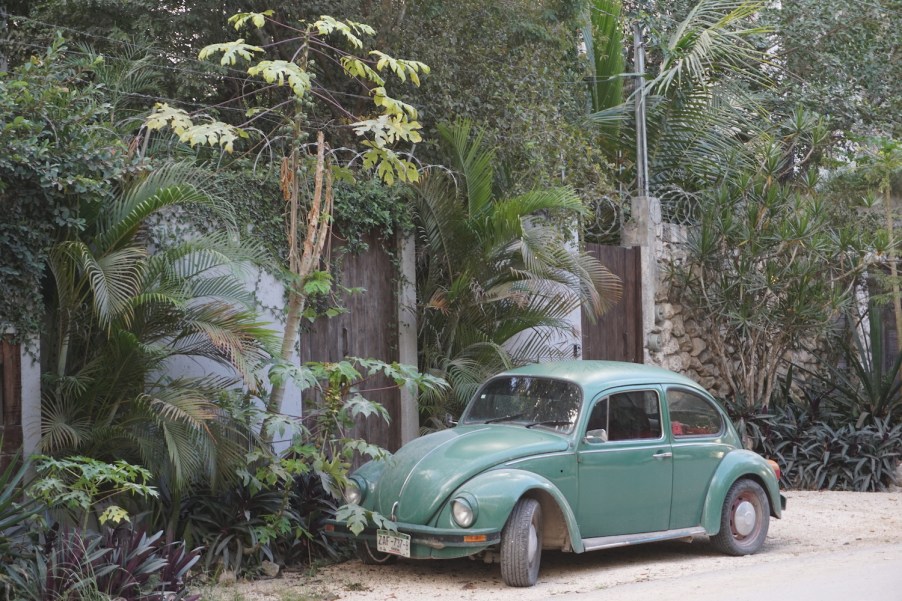
Volkswagen Built the Classic VW Bug for So Long, It Overlapped With the New Beetle
I always thought of the Volkswagen Beetle (or VW Bug, if you prefer) as a classic icon of the 1960s. So imagine my surprise the first time I visited Mexico: I found the streets full of classic Volkswagen Beetles, many of which looked relatively new compared to the jalopies around them. So I took to Google and found that the VW factory in Pueblo, Mexico, kept building the Bug until 2003. Some would argue that makes the VW Beetle the most popular car in history.
When did Volkswagen build the final classic VW Beetle?
The final classic VW Beetle rolled off Volkswagen’s Pueblo, Mexico, assembly line on July 30th, 2003. VW had long since halted U.S. sales (1977) and European sales (1985). The humble VW Bug served for decades with relatively few mechanical changes, making it a strong contender for the most popular car ever.

2003 wasn’t truly the end for the VW Beetle. Volkswagen rolled out its “New Beetle” for the 1998 model year. This retro-looking little coupe shared a chassis with the Audi A3 and VW Jetta. Like the classic VW Bug, the New Beetle was a compact, efficient, and unique-looking car. Unlike the classic, it was a front-engine, FWD car.
VW released a second generation, sometimes called the A5 Beetle, for the 2012 model year. But as the modern crossover became the default mode of transportation for most drivers, Volkswagen canceled the Beetle nameplate after the 2019 model year. Here’s to hoping we see the nameplate and iconic design resurrected for the electric age.
What year was the classic Volkswagen Beetle?
Ferdinand Porsche designed the Volkswagen Beetle for Germany in 1938. But the car didn’t go into production until after the war (1945). VW exported the first Beetle to the U.S. in 1949 and the last in 1977. It continued to sell the car in Europe until 1985 and in Mexico until 2003.

The classic VW Beetle has a slightly controversial history. Adolf Hitler commissioned Austrian engineer Ferdinand Porsche to design a “People’s Car” (Volkswagen). The result, like the Porsche, was an air-cooled RWD with a small rear engine. This allowed the car to be relatively roomy for its tiny size. The bug’s light weight made it fuel efficient, another important feature in wartime Germany.
But the Nazis needed their factories producing weapons, and only a handful of Bugs were built for party members. After the war, the Allies searched for ways to reinvigorate the economy of occupied Germany. One solution was to rebuild a factory so the German people could build and sell the classic VW Beetle. The rest, as they say, is history.
Are classic VW Beetles good cars?
Classic VW Beetles were not known for having extra power–or extra space. But they could comfortably fit four people and got excellent fuel mileage for their era. As importantly, the simple technology employed in the Volkswagen Bug gave it a bulletproof reputation for reliability.

In the United States, the classic VW Beetle was introduced by the luxury European car dealer Max Hoffman–according to MotorTrend. It was positioned as a novelty and became a cultural icon. But in other countries, it was the classic VW Beetle’s durability that made it popular. Volkswagen ended up building Beetle assembly plants on every continent (except, of course, Antarctica). It sold more than 21 million Bugs in total.
VW began offering classic Beetles in Mexico in 1954. Over 49 years, the car became a part of the country’s culture. Factory workers in Pueblo serenaded the final 2003 beetle with Mariachi music as they built it and even nicknamed it El Rey (The King). It is an Aquarius Blue “Ultimá Edicíon” that now lives in the VW museum in Wolfsburg.
Because VW sold 21 million Beetles over 58 years, many consider it the most successful car ever. But others argue that other models (despite drastic mechanical changes) sold more, or that certain nameplates have lasted even longer.
Next, read about all the contenders for the best-selling car of all time or watch CNBC’s deep dive into the end of the VW Beetle in the video below:







